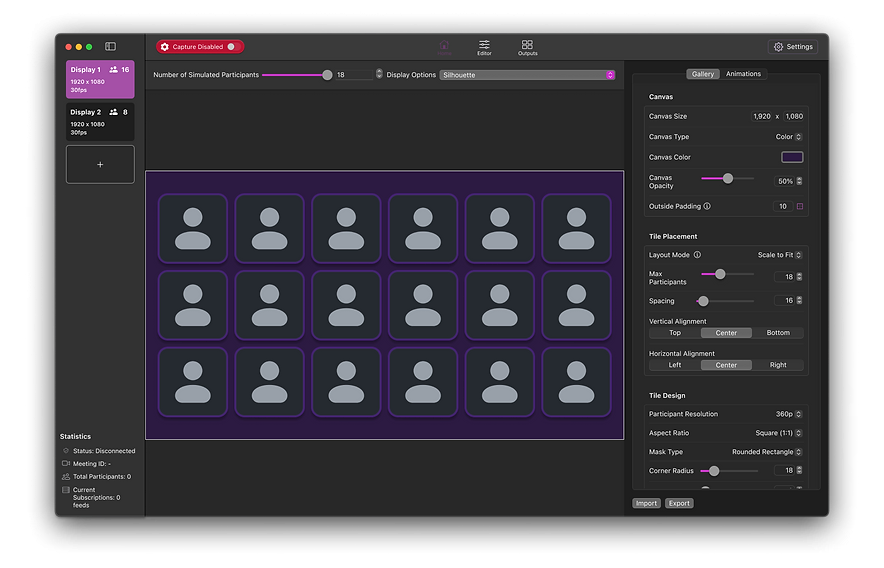
Emerging Trends in Live Event Productions: Navigating the New Norm
The landscape of event production has undergone a seismic shift over the past few years, with the pandemic serving as the catalyst for accelerated change. This evolution has pushed us from the comfort of traditional, in-person events to the dynamic realm of virtual and hybrid gatherings.
Let’s delve into the transformative journey of virtual event production, identifying challenges, technological advances, and emerging solutions that are shaping the future of how we connect, share, and engage.
The Good Old Days: A Nostalgic Past
Remember town halls, all-hands meetings, and conferences brimming with people, bustling energy, and the direct interaction that came so naturally? These events were orchestrated by professional crews wielding multiple cameras and microphones, all mixed seamlessly by a producer using ATEM switchers. The output, a polished single feed, was then transmitted to a contribution encoder, ensuring a high-quality viewing experience for remote audiences. This was the gold standard, the ideal scenario for live events.
The COVID-19 Catalyst: A Shift to Virtual
With the onset of COVID-19, the event production world was thrown into uncharted waters. The necessity for entirely virtual events brought about makeshift solutions, ranging from the simplistic “Brady Bunch” Zoom outputs to more complex setups involving endpoint HDMI captures for platforms lacking HDMI out. These solutions, though innovative, often fell short in terms of production quality and control.
The Challenges of Live Production
One of the significant hurdles faced was maintaining the integrity of live production while also ensuring a high-quality offline backup for later edits – a process known as “ISO recording.” Producers had to adapt to using software like vMix, OBS, and Wirecast, all the while praying for stable internet connections from remote operators. This era also saw the advent of “cloud” production, which often meant running Windows software like vMix on Amazon EC2 instances, a clever workaround but far from a perfect solution.
Audio and Video Sources: From Scarcity to Innovation

The pandemic era highlighted the importance of quality audio and video sources. At the height of the pandemic, finding a decent webcam was as challenging as finding toilet paper. Enthusiasts and professionals alike turned to DSLRs with HDMI capture cards for better quality video, leading to a surge in demand for “clean output” solutions. This period also saw manufacturers like Canon and Fuji step up, offering webcam software that allowed DSLRs to be used directly via USB. Though not without its flaws, this innovation marked a turning point in source quality.
The Rise of New Technologies
The post-pandemic period has introduced new players in the market, such as the Opal C1 and Insta360’s Link, offering superior video quality without the bulkiness of traditional DSLRs. Apple’s continuity camera further lowered the barrier of entry to high-quality video capture, making it accessible to a broader audience.
Hybrid Events: The New Standard
The hybrid event model has solidified its place as the future of event production. This model necessitates high-quality audio and video, seamless integration of remote and in-person participants, and a level of production that today’s audiences have come to expect. Tools and technologies are rapidly evolving to meet these needs, with solutions like Epiphan Connect and ZoomISO offering innovative ways to capture and mix live feeds.
The Evolution of Tools and Techniques
The shift towards hybrid events has necessitated a reevaluation of the tools and techniques used in event production. Solutions like Epiphan Connect, which offers cloud-based SRT output, and ZoomISO, which enables ISO extraction of participants for high-quality feeds, are at the forefront of this evolution. These tools, while still in development, promise a future where high-quality, integrated event production is accessible and efficient.
NAB Show 2024 Announcements
At NAB Show 2024, the trend towards enhanced solutions for hybrid event productions remained evident. Noteworthy releases included:

- Liminalet, known for ZoomISO, introduced Tiles, a tool designed to enhance control over Zoom virtual events. Tiles allows users to customize and manage the Zoom audience gallery with greater flexibility.
- Magewell highlighted the Director Mini, a device that enables stream operators to seamlessly integrate multiple HDMI feeds and provides basic production controls. This new piece of kit appears to complement the Tiles software.
Looking Ahead: StreamShark’s Perspective
At StreamShark, we are closely monitoring these developments, eager to identify and adopt best practices that will enhance our services. Our goal is to collaborate with production partners who are equally invested in understanding and utilizing these cutting-edge tools. As we navigate the complexities of this rapidly changing landscape, our commitment to innovation remains unwavering. With exciting advancements within the industry (like AI powered live captions), we are optimistic about the future of event production.
In conclusion, the journey from traditional in-person events to today’s hybrid model has been fraught with challenges but also ripe with opportunity. The pandemic has accelerated technological advancements, pushing us to rethink how we produce events. As we move forward, the focus will be on seamless integration, quality of experience, and the adaptability of technologies to meet the evolving needs of audiences and producers alike.
The future of hybrid event production is bright, and at StreamShark, we are excited to be a part of shaping that future.
